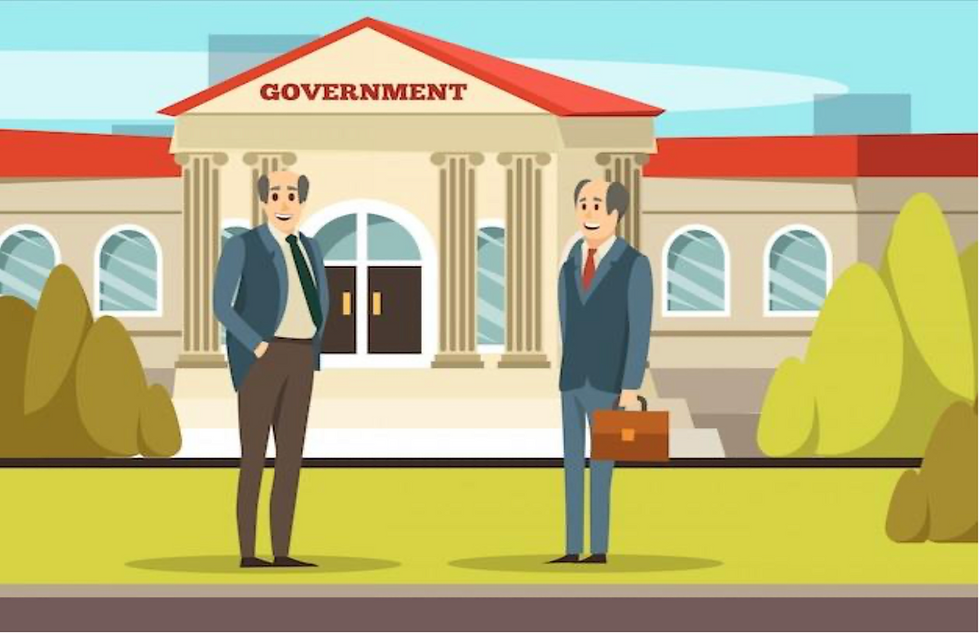Understanding the Separation of Powers: The Three Branches of Government Explained
- ecourtney722
- 6 days ago
- 4 min read
Welcome to our examination of the three branches of the US government. Our responsibility as primary school teachers are essential. We mold young brains to comprehend the world around them. They will learn about the judicial, executive, and legislative branches as part of this. These subjects are important outside our curriculum. For our pupils to comprehend their government, they are essential.
Furthermore, this information is crucial for people getting ready for the EC-6 391 test. We will dissect each branch in this guide. Our aim is straightforward: make these ideas simple to teach and learn. Now let's get this voyage started. Together, we'll improve as educators and raise the quality of learning for our children.

The Division of Powers
The framework of our government is based on this idea. It assigns three branches of equal power. How come? The objective is straightforward: keep no one branch from growing too strong. Each branch thus plays a unique purpose. This division also guarantees a system of checks and balances. That is, each branch has the authority to supervise and restrain the authority of the others. Maintaining this equilibrium is essential to a just and democratic government.
Historical Background
The concept of the separation of powers has a long and rich history. It was there when the United States was founded. This system was created by the Constitution's framers. They were influenced by the works of philosophers such as Montesquieu. He stressed in his works the value of apportioning governmental power. Moreover, the split was considered necessary to safeguard the rights and liberties of the inhabitants.
Significance in the Modern World
Moreover, comprehending this idea goes beyond merely studying history. It still holds today. We can relate this concept to contemporary events in our classrooms. There is an opportunity, for instance, when a new law is passed or a Supreme Court ruling is announced. We can demonstrate to our children how the division of powers functions in the actual world. Furthermore, these conversations may help children relate to and become more interested in the subject.
1. The Legislative Branch
Investigating Congress Let us first address the legislative branch, which is referred to as Congress. The Senate and the House of Representatives are its two constituent parts. They are essential in unison. Their primary duty? establishing legislation. There are multiple steps in this procedure to ensure fairness and a comprehensive examination.
Plus, it's crucial to know how a bill becomes a law. An idea is the first step. Anyone can have this notion; even one of our students can. A congressman then introduces the measure. Committees then examine it. Then it needs to be approved by the Senate and the House. The President then officially signs it into law. This procedure demonstrates how thoughtful deliberation and cooperation create our laws.
2. The Executive Branch
The President serves as the head of our government's executive branch. The President strives to enforce the law in tandem with the Vice President and the Cabinet. This group is in charge of everything from national security to schools. Every day, their choices affect our lives.
Leaders from a variety of fields, including education and defense, make up the Cabinet. They offer the President advice. Making wise judgments for the nation is aided by this. Their cooperation demonstrates how the executive branch keeps things operating smoothly in our nation.
3. The Court System
Comprehending the Legal System: The Supreme Court and other courts are part of the judicial branch, which is very important. This arm ensures that laws are just and constitutional. Judges and courts consider various scenarios to determine whether laws are being applied correctly.
This branch's highest authority is the Supreme Court. It renders decisions on major matters that have national implications. These rulings aid in maintaining the constitutionality of our laws. This demonstrates the judicial branch's significance to our government.

Checks and Balances
Maintaining an Equitable Government: Checks and balances are a clever structure in place in our government. Akin to a balancing game, no branch must dominate the others. Every branch maintains harmony with the others through means of mutual verification.
Actual Examples: Let's examine how this operates. A bill passed by Congress may be rejected by the President. We refer to this as a veto. If enough members of Congress agree, it can still become law. Like a second opportunity, really. The Supreme Court also reviews statutes. The Court has the authority to reject a law if it conflicts with the Constitution. These actions support the fairness and balance of our government.
Application in the Classroom: We can make this into a stimulating conversation in our classrooms. We can demonstrate the operation of checks and balances by using historical or current events. This adds clarity and appeal to the subject. It goes beyond simply passing tests. It's all about demonstrating to our pupils how our government upholds the rights of all people.
Teaching Strategies and Resources
Government lessons may be interesting and entertaining to teach. To help our pupils understand these concepts, we might employ a variety of techniques. Interactive games and group conversations, for instance, can help make these ideas more relatable. Students can also learn more effectively by using visual aids like charts and films.
Use Good Resources: We have access to a wealth of resources. Great websites with instructional videos, games, and lesson plans. Children's books on government can also be beneficial. These resources give kids an engaging and simplified way to learn about government.
Final Reflections
In conclusion, exploring the three branches of the US government provides an extensive educational opportunity. As we've seen, each branch plays a distinct job, but they all cooperate to preserve justice and balance. We provide ourselves and our students with vital knowledge by delving into these ideas. Furthermore, imparting knowledge on these subjects can be rewarding and influential. By employing interactive techniques and a variety of tools, we can make these theoretical ideas tangible. This method not only helps students prepare for exams like the EC-6 391 but also produces well-informed future citizens.




Comentários